1.
Introduction
Campi Flegrei is a restless volcano by the western suburbs of Naples in southern Italy. Its earliest known settlements date back to at least the middle Bronze Age, about 4100 years ago [1]. More complete records begin with the arrival of the Greeks in Cuma on the west coast of Campi Flegrei during the 8th Century BC and, especially, with the dominance of Rome five centuries later [2]. The history of Campi Flegrei is thus more than the story of a volcano: it is also a story of how societies cope with an unstable Earth.
A dramatic change occurred in 1970, when the volcano showed the first signs of reawakening for more than 400 years. This led to the forced evacuation of more than 2500 people from rione Terra, the historic heart of Pozzuoli, which was the town most severely affected by the new unrest. Although no volcanic eruption occurred, the evacuees have not been allowed to return. The permanent evacuation is thus unusual because it is the consequence of a non-event, instead of an eruption.
Volcanoes reawakening for the first time in several generations present extreme difficulties in preparing a suitable community response [3]. Memories of previous volcanic events have typically faded so that few, if any, guidelines are available on the best actions to take. Scientists monitoring the volcano are unsure whether unrest will lead to an eruption, while the populations at risk are unsure whether official advice is reliable. Trust is weakened further when an emergency does not produce the expected volcanic activity. The emergency may be seen as a false alarm and compromise confidence in following advice during future unrest.
The 1970 emergency is an example of how communities respond to their first experience of volcanic unrest. Here we have gathered memories of the event from those who lived through them and used these to establish for the first time a unique oral history of the evacuation and its aftermath. The memories reveal a story of social disagammaegation, sense of loss and uncertainty in trusting official statements about the threat from the volcano. The results highlight how strategies for improving responses to unrest must adopt a multilevel approach [4] that incorporates social perspectives of the volcano as well as a physical understanding of volcanic behaviour. They are presented in three parts: the first describes conditions in rione Terra before the 1970 evacuation; the second focuses on the evacuation, which marks a psychological reference for distinguishing a life before and after an event [5]; and the third analyses how the community has since adjusted to the consequences of being resettled even though no natural calamity has occurred.
2.
Materials and methods
This study forms part of the Multimedia Archive of the Memory (Archivio Multimediale delle Memorie; www.memoriedalterritorio.it) hosted by the Department of Social Sciences at the University of Naples "Federico Ⅱ". The archive is a free-access repository of oral histories and eye-witness accounts of key events in southern Italy during and after the Second World War.
Memories can change with time and so do not always represent precise records. Regardless of such changes, they provide direct insight into the importance given to particular events and how actions at the time have been later evaluated and rationalised [6]. They are thus crucial to understanding how beliefs have influenced human behaviour and how they might do so in the future.
Primary sources were in-depth interviews with former residents of the evacuated district, rione Terra, and other eye-witnesses of the evacuation in 1970. At that time, 2624 people lived in the rione, 61.3% over the age of 15 [7]. Thirty interviews were conducted between 2011 and 2016 and, when permission was granted, they were recorded on audio and video. Although a small sample of the 1970 population, the interviewees cover the typical range of social class in the rione, as well as representatives of Pozzuoli's Municipality, volcanologists monitoring the unrest and journalists reporting events. The extracts quoted below are followed in brackets by the name, first letter of the surname and, when made available, the year of birth. Text in the original language can be found at the website for the Multimedia Archive of the Memory. Information from contemporary accounts in newspapers, archive documents and statistical records was used to complement the interviews and to identify any discrepancies between contemporary and remembered accounts.
3.
Living with volcanic unrest in Campi Flegrei
Campi Flegrei has the shape of a vast, shallow depression about 12 km across and less than 200 m deep. It stretches from the west of Naples to the Tyrrhenian coast and its southern half lies submerged beneath the Bay of Pozzuoli. Its main centre of population is the coastal town of Pozzuoli, the modern name for Puteoli, which was the leading port of Ancient Rome. The current shape of the depression—or volcanic caldera—was created 15,600 years ago during a giant eruption that expelled some 50 km3 of magma (the so-called Neapolitan Yellow Tuff; [8]). Between then and about 4000 years ago, at least 60 much smaller eruptions (less than c. 1 km3) occurred across the floor of the depression [9], leaving behind numerous cones that today appear as small hills. Only one eruption has occurred since, in 1538, about 3 km west of Pozzuoli [10,11].
Although Bronze Age settlers must have witnessed some eruptions [1], the Ancient Greeks and Romans encountered only vestiges of activity in the form of hot springs, bubbling mud pools and the escape of volcanic gas from isolated pockets of ground. Such activity gave rise to the myths and legends of Campi Flegrei. The Ancient Greeks set the entrance to Hell by the lake inside a volcanic cone in western Campi Flegrei, where they saw birds die if they flew too close to the water. The cone is today called Averno, from its original Greek name άορνος for "without birds". The birds were victims of volcanic gas (probably carbon dioxide) seeping from the ground and collecting among trees around the lake.
The Romans later removed the problem at Averno when they felled the trees for construction. At the same time, they enhanced the reputation of Campi Flegrei's thermal springs for recreation and medical benefits—a reputation that has continued uninterrupted to the Present. A striking example is the richly-illustrated manuscript De balneis Puteolanis, which is attributed to Pietro da Eboli (1150-c. 1220) and clearly depicts the cures being taken at Solfatara, a volcanic cone famous for its degassing and mud pools, 1.6 km inland from Pozzuoli.
However, the most remarkable feature of Campi Flegrei's behaviour has been the persistent slow sinking and uplift of the ground since at least Roman times [12,13]. Known locally as a bradyseism (or "slow earthquake"), the largest movements have been located around Pozzuoli, where evidence has been preserved on three marble columns in the Roman marketplace called Serapeo [13]. The columns are 13 m tall. The lower third of each one has been bored into by clams that lived just below sea level. The columns today stand again on dry land. The incisions from the shellfish demonstrate that the marketplace must have sunk into the sea and re-emerged at least once since Roman times [12,13,14]. They have transformed the columns into so-called natural thermometers of the bradyseism—"indelible signs of the very slow sinking and phases of uplift that have accompanied the history of Pozzuoli" [15]—even though they are better viewed as natural barometers, because they follow changes in the underground pressures that control movement at the surface [16].
Campi Flegrei's last eruption, in 1538, occurred after an interval of about 3500 years. It followed a century of ground uplift by 15 m at Pozzuoli [13,14] and, within a week, had buried the village of Tripergole beneath the new cone of Monte Nuovo [11,17]. After the eruption, the ground at Pozzuoli returned to a slow subsidence of about 2 m per century [13]. This subsidence ended in 1950, since when Pozzuoli has been raised again, mostly in three short bursts of about 1 m 1950–1952 and about 1.75 m each during 1969–1972 and 1982–1984 [16,18].
The uplift in 1950 was not recognised at the time [18] and so, when uplift was confirmed in 1970, it was the first such movement to have been recorded for nearly 450 years [19,20]. It caught everyone by surprise. Citizens, administrators and scientists alike were not prepared. Since uplift at Pozzuoli had preceded the eruption of Monte Nuovo, an obvious question was whether the new movement might indicate another approach to an eruption [19]. A second and more pressing concern was whether the uplift could seriously damage older buildings in Pozzuoli, especially the district of rione Terra, which was built on a small promontory into the Bay of Pozzuoli and was the site of the town's original Roman settlement [19,21]. The response of the authorities was to clear the district by force. The unrest ceased in 1972 without an eruption or major damage in the rione but, even so, the evacuees were permanently relocated, feeding rumours that the evacuation had been driven more by property speculation than by concern for public safety [19,21,22]. Nearly 50 years later (2019), rione Terra is still empty and most of the evacuees remain in purpose-built housing in Toiano, on the outskirts of Pozzuoli and 1.5 km away from the sea.
4.
Results: memories of the 1970 evacuation and its aftermath.
4.1. Losing touch with Nature
In spite of a history intimately linked with a volcano, rione Terra's community in 1970 appears to have forgotten about the bradyseism and volcanic activity of Campi Flegrei. Jobs, health and schooling were more urgent concerns. Covering just 40,000 m2, the rione was home to 2624 people, most of whom relied on fishing for their income [7]. Living conditions were poor. Among those of working age, 38.3% were in full employment and 19.6% in part-time work, while nearly one in five children did not attend school. A few wealthy residents lived in buildings still bearing the names of former nobility and which boasted upper floors with wide panoramas across the bay and inland. However, almost half (47.3%) of the 529 homes in rione Terra were unsuitable dwellings on the ground floor, in basements or even caves and some supported as many as 15 people [7,23]. Even running water was a luxury:
"You could take a shower … or even a quick bath once a week. It was traumatic, because you had to collect water from the drinking fountain in the square, take it home and heat it without gas" (Luigi M, 1950)
In short, rione Terra had become the "unhealthy sore of Pozzuoli", whose poor living conditions were frequently discussed but not properly addressed [24]. As a result, outstanding goals for the town hall were to restore acceptable living conditions and to establish a new school. The bradysesim of Campi Flegrei was not a topic of concern.
At the same time, the community was still adjusting to the loss of its cathedral six years earlier. About 11 o'clock in the evening on 16 May 1964, an intense blaze started in the wooden trusses of the cathedral's roof; five hours later, most of the building had been destroyed [25]. The cause of the fire has never been established.
"I remember very well the date the cathedral caught fire... so when people say it happened 'a few years ago', I say the exact date,
'May '64'…" (Giovanna B, 1949)
"The cathedral was the focal point of religious life among the Puteolani… For any celebration, whatever it was, they went to the cathedral." (Domenico P, 1946)
The cathedral had been the spiritual heart of rione Terra and its loss had upset communities throughout the whole of Pozzuoli. As a new decade opened, nobody could imagine that worse was to come.
4.2. Evacuation on 2nd March 1970
Local fishermen were the first to notify the Pozzuoli town hall of unusual ground movement and an increase in fumarolic activity by the beginning of 1970. Sergio Causa, Councillor for Finance at Pozzuoli, recalls:
"The fishermen, especially the fishermen, realised something was wrong, because of the bridge at the entrance to their harbour. Normally, they had to duck under the bridge to avoid hitting their heads and couldn't explain why now they could pass underneath without doing so. Not only that, they could also see watermarks along the quayside where the sea used to reach. What they found most remarkable, though, was the increase in fumarolic activity all around the bay, even in the harbour, in the Temple of Serapeo and along via Napoli. The water temperature was clearly hotter near these fumaroles. So they came to the town hall; they talked with the mayor in the street; they went to the Puteoli Club—'Look, professor, we're going up here'".
The news spread by word of mouth, together with stories that the columns at the Serapeo marketplace were also standing higher than before. It reached the national press on 22 February, when Eleonora Puntillo published an article in the newspaper l'Unità, under the heading "Is the earth burning beneath Pozzuoli?" She recalls:
"At the time, I worked for the communist party newspaper, l'Unità. The Provincial Party Committee told me that local members at Pozzuoli had reported that the town was in difficulty, in danger, and asked me to find out what was happening. I told them that the ground had risen and had caused some disturbance. It wasn't very bad—no buildings had collapsed and no earthquakes had been felt—but it was still disturbing. The situation was peculiar. At the port, ramps from the ferries no longer dropped down to the quayside, but went upwards".
When the behaviour was explained as an effect of the bradyseism, the general population were perplexed.
"We didn't know the word 'bradyseism' in those days. So we were amazed when someone used the word and said that the ground was rising up" (Domenico P, 1946)
"We knew that the ground went up and down. What we didn't know was that the subsidence would change our lives" (Oscar P, 1948)
The opening months of the uplift occurred without earthquakes. Seismometers detected some tremors at the end of February 1970, but none was strong enough to have been felt by the population. National, scientific and communal authorities discussed safety in Pozzuoli: as a result, some buildings outside rione Terra were evacuated as a precaution [26].
The evacuation was rushed, poorly explained and, even without an eruption, triggered traumatic social consequences as complex as those that follow a disaster [27]. The order to evacuate the whole of rione Terra was issued on 2nd March by the Prefect of Naples, who had been in contact with Giuseppe Imbò, Director of both the Vesuvius Observatory and of the Institute of Terrestrial Physics at the University of Naples.
Giuseppe Luongo, a researcher at the Vesuvius Observatory in 1970 (and appointed its Director in 1983), recalls:
"There had been a short burst of seismicity—while we were beginning to take measurements and to install instruments—around the end of February, the 24th I think. This worried us because it occurred on top of the ground uplift. For that reason, we decided that rione Terra should be evacuated immediately, because it seemed at the time to be the zone in greatest danger at Pozzuoli".
The order, however, came as a complete surprise to the Puteolani.
"The idea had been mentioned, but there were no posters advising that rione Terra would be evacuated on such and such a day. Above all, though, I can tell you that they were days full of confusion. Information wasn't made public and so not everybody knew. You had to go and find it out for yourself" (Giovanna B, 1949)
"There wasn't the information like you have today. We were ignorant and didn't know anything. And nobody tried to help us understand, that was the main problem" (Maria C, 1944)
Even the mayor of Pozzuoli, Angelo Nino Gentile, was caught unawares. He received news of the evacuation by telephone, while he was in Rome to discuss the circumstances at Pozzuoli with the Minister of the Interior: "How can you evacuate a town in a matter of hours?" He remembers. "Just like that, on the spur of the moment? Why hadn't they told me sooner? The bradyseism is a slow process. How could the earth suddenly go mad? If they knew, they could have told me. And my mother? My family? What should we do? My heart was all over the place and my head felt like a volcano. Did I still have a brain?" [28].
The evacuation was run by the army, carabinieri and police. Rione Terra was identified as a so-called "red zone" of high risk and so they ordered its residents to leave almost immediately. Why did they have to leave? Where were they going? Answers to these questions were inconsistent or not offered at all. What the population saw, therefore, were armed men in riot gear ordering them from their homes without warning or proper explanation. It was a brutal move which raised fears that a dreadful event was about to occur.
"Everything was in uproar. The army, police, carabinieri: none of them knew what to do. Okay, we had to evacuate, but how? There had been no test of what to do, nothing, nothing at all" (Raffaele G, 1939)
"I can't say we were happy to leave rione Terra, because we had no idea where they sending us. The army arrived, took our stuff, put us on trucks—but where were we going?" (Giuseppina C, 1949)
The evacuation was complete in just over a day. The streets leading to rione Terra were walled up to prevent attempts to return home. The evacuation encouraged others to leave from adjacent districts in Pozzuoli. No official numbers have been recorded for those leaving on their own accord, but newspapers of the time quoted figures of 2000 (Roma), 5000 (Il Mattino), 6000 (L'Unità) and 15,000–20,000 (Corriere della Sera).
The evacuees from rione Terra were bussed to temporary accommodation around the margins of Campi Flegrei, such as in Licola, Giugliano and Marano, as well as in Naples, including the psychiatric hospital at Frullone.
"The Provincial authorities had almost finished building Frullone, a psychiatric hospital in the Miano district of Naples. In the night, with sirens blaring, families were taken inland almost to the northern suburbs of Naples—even though there were rooms for 10–20 thousand people empty along the coast (which were in fact used later in '83)" (Eleonora Puntillo)
"We first went to Licola. We couldn't stay there, because the house was not fit for living in. After three days, we went to Marano, to a park … with really lovely buildings, long balconies—just lovely, I have to say" (Giuseppina C, 1949)
The whole response was strikingly similar to that after the Belice Valley earthquakes in Sicily in 1968 when 100,000 people were moved from their homes. They were later felt to have been abandoned by the State [29], much as earthquake victims had been treated after the 1908 Messina earthquake in Sicily [30]. Although decisive, the top-down nature of the evacuation was seen as authoritarian and without regard for the people being moved. It fed rumours that the operation had been motivated not by scientific concern, but by property speculation [22]. Although the accusation was flatly denied by the scientists charged with monitoring Campi Flegrei, it coloured popular opinion about whether an evacuation had been necessary.
While some evacuees settled to their new circumstances, others demanded they be allowed to return home, from fishermen, who could not tend to their boats, to displaced workers, who spent hours commuting each day to factories in Pozzuoli. The demands were denied and met instead with offers of economic support from the town hall. In the end, Special Law 475 was passed for Pozzuoli on 19 July 1971 and, as described below, allowed the town hall to requisition all the houses not already relinquished in rione Terra.
4.3. Rione Terra: uprooted forever
The July 1971 Special Law marked a turning point for rione Terra. It declared that the tuffaceous promontory was of essential cultural heritage and, to protect it from property speculation, that Pozzuoli's town hall had exclusive responsibility for ensuring its preservation in light of the evolving bradysesimic unrest. The council was thus given the responsibility not only to develop plans for the future of rione Terra, but also to buy the existing homes by compulsory purchase order, to provide economic support for the evacuees and to develop new housing for their use (following Law 167/62 for affordable, popular housing).
The main alternatives for new housing were to construct a residential district at Toiano or to redevelop rione Terra itself. Redeveloping rione Terra would favour a general improvement in living conditions in the district, retain the character of the rione and buildings of historical importance, and keep alive the historic centre of Pozzuoli, rather than spread the community around the outer margins of the town. On the other hand, developing a new residential district had the advantage of constructing buildings that were designed from the start to meet necessary anti-seismic regulations. Moreover, immediate redevelopment of rione Terra would be delayed by discovery of the underlying Greco-Roman town that had been revealed by the 1964 blaze at the cathedral. The debate ended in compromise, with the simultaneous construction of a new residential district in rione Toiano and restoration of parts of rione Terra. The evacuation of rione Terra thus opened a new chapter in the growth of Pozzuoli overall: the town once built around a historic centre was becoming a broader urban area with a collection of centres around what was once its periphery.
The relocation to Toiano is today viewed with mixed feelings. Physical conditions have improved for those who had lived in the grottoes of rione Terra. They now enjoy open spaces and running water, and no longer have to go to a public drinking fountain for supplies. They are also living in buildings more likely to withstand earthquakes. In contrast, those who had left behind historic, well-appointed homes in the centre of Pozzuoli see the move to Toiano as a step down to anonymous and impersonal apartments on the edge of town.
"Lots of people lost beautiful homes, their own property, with sea views, sitting straight over the sea. But there were others who gained, especially those moving from homes that were dark and nothing special. They were the lucky ones, because they were moved into lovely apartments" (Giuseppina C, 1949)
"Rione Toiano can be split into three areas: the centre where the schools are, the area facing Monte Barbaro and the area looking towards the bypass. If you look closely, you see that two areas are similar and the third is quite different. We call [buildings in] the third area giant snakes, built like tanks a few hundred metres long and, I think, five floors high. In the other two areas, though, they are arranged in squares around gardens, there's more space… The houses there are more human, psychologically better. I can look out and watch my son playing… In those tanks, though, you are not just in a block of flats—three apartments each floor for five floors—but in this endless impersonal building it's more difficult to keep an eye on your children, for example. These giant snakes run one against the other. Move 20 metres and you can't be seen at all" (Oscar P, 1948)
Oscar P's division of Toiano into three zones reveals how small changes in the shape of even neighbouring spaces can alter the feeling of community. The importance of space was reinforced by several interviewees when they compared rione Terra and Toiano. The two districts have completely different shapes and sizes. Rione Terra had narrow, winding streets among low buildings and it was normal to conduct life outside, as if the streets were part of everyone's home. In Toiano, the streets are wide and ordered geometrically around taller apartment blocks. Instead of drawing neighbours outside, they act as boundaries between homes. Gone are the street parties, the unofficial names for local landmarks, and the sharing and trust developed by close neighbours—losses highlighted in interviews by how frequently as sense of family is used to describe life in rione Terra.
"When you went up there, it was like meeting one vast family. When someone arrived from outside, everyone came out to see what was going on" (Sergio C, 1941)
"I remember going out to meet friends late in the evenings, around 11 o'clock. Nothing ever happened—even if you stayed out until two or three in the morning—because everyone knew everyone else" (Domenico M, 1946)
"The old friendliness has gone. People don't mix so much anymore. We've become more suspicious of each other, maybe because people just do as they please. Life was very special in rione Terra, because we spent a lot of time in the street. It was chaotic … sometimes you couldn't distinguish a home from a shop or a stable!" (Giulio G, 1960)
The comments underline the observations of Tapaninen [31] that the stories told by the evacuees in Toiano are "rarely set inside the former homes of the historical centre [but are placed instead] in the streets, alleys, and neighbourhoods of old Pozzuoli. The old homes mostly figure as a counterpoint to the new homes that are spacious and with all modern convenience". They also follow the emotional trauma commonly associated with disasters: thus, even though a disaster had not occurred, trauma had been triggered by the evacuation itself. Fenoglio [32] has observed that "when we listen to protagonists long after an event, we find that their stories describe not only a personal pain, but also a change in their whole world. They describe life in terms of "before" and "after" the disaster—resembling spirits that were moving within a collective scenario". Hence the forced clearance of rione Terra has become the boundary between the end of one way of life and the beginning of another, following the disperal of a community and the disappearance of traditional street culture.
Economic factors can also affect the strength of a community. As described by Sennett [33], among "communities that are poor, or in times of scarcity, sharing between individuals and families is a necessary element of survival", while "communal sharing... brings people together and necessitates direct social contacts between them... services, skills and possessions that could be shared [provide] a focus for concrete communal activities". Improved living conditions at Toiano may have thus reinforced the decline in sense of community already started by the evacuation; they have certainly not compensated for the broader sense of loss, even of mourning, caused by leaving rione Terra.
"It's all finished. A whole culture was destroyed when rione Terra was emptied. The people now live in the outskirts, round the margins … they've been moved aside, marginalized in every sense" (Giulio G, 1960)
"We have lost our roots" (Maria C, 1944)
It seems that Pozzuoli has faced the destruction of an archaic world [34]: the despair for a lost community is plain.
5.
Discussion
The 1970 evacuation of rione Terra is the remarkable story of a community that has suffered the consequences of a disaster that never took place. Five decades later, half of the rione is still not accessible and the original community remains displaced. The evacuees have thus had to confront simultaneous changes from a classic to modern social structure and from life at the centre to the periphery of a larger community (in this case Pozzuoli). They have also had to confront the three stages of loss outlined by Pezzullo [35]: a loss of identity, when familiar names and events have been fogotten and traditional connections with the past disappear; a loss of place, when links to a physical environment have been broken; and a loss of social dynamics, when the continuation of a community can no longer be guaranteed, precisely because the conditions in which it grew and expressed itself have suddenly been removed.
The evacuees spent almost seven years in temporary accommodation before new housing had been built at Toiano. In the meantime, rione Terra remained closed, even though no eruption had occurred—an outcome that naturally reawakened misgivings about the motives for evacuation.
"Even several years later, not one building had fallen down. Many, many years later some very minor collapses occurred, but only because water had seeped into buildings that had not been looked after … but no building collapsed because of the seismicity" (Domenico M, 1946)
"Before my father had been forced out, my home was not damaged. The main walls were 50 cm thick and not one of them was cracked" (Giulio G, 1960)
"In spite of the micro-earthquakes, not even a stone had fallen down from rione Terra. Of course, some rocks fell into the sea, but only because of erosion by the waves. But the houses, even though they were not especially new (indeed, they were restored very rarely) didn't collapse. There wasn't really a danger at all" (Oscar P, 1948)
With the break-up of their community, evacuees feel they have been made to suffer the social and economic damage of a disaster without a disaster actually having occurred. The evacuation is felt to have been the result of a false alarm or, worse still, of deliberately fake news. A recurring theme from the interviews is that the levels of local sesimicity were moderate enough to live with and did not require an evacuation. The risk from a volcanic eruption is not mentioned at all. Indeed, when asked about the bradyseism, interviewees rarely discussed the phenomenon itself, but instead focussed on their feelings of fear in how they were evacuated and in the social and material losses they suffered. The feelings have fomented distrust of state institutions, from political authorities to scientific bodies. Such feelings are inevitably passed down as a communicative memory [36] to later generations, who use the information to learn coping strategies against future events [37,38]. The difficulty is compounded by the 50% increase in the number of people living in Pozzuoli since 1970, up from 59,813 to 81,115 in 2018 [39].
As recognised by Schenk [40], "the manner, scope and thus benefit of this implicit or explicit "learning" varies greatly and depends on epoch and culture. This variation reveals the role played by history and culture in the learning process (…). Anyone who applies present-day criteria to learning processes of the past renders these processes useless for reducing social vulnerability towards natural risks. Learning processes to improve disaster management and prevention should therefore be assessed twofold: on the one hand in the context of their respective age and culture, and on the other regarding our own present-day value criteria and conception".
Memories of the 1970 evacuation support Schenk's evaluation of how memories of the past can influence learning in the future. They confirm the importance of adopting a multilevel approach to understanding how communities view the danger from their volcano. Thus, while studies of volcanic processes identify the types of hazard to be expected, memories of previous emergencies reveal how much communities trust official statements about the associated level of threat. Creating effective strategies for responding to unrest must accommodate the different perspectives from which the unrest is seen, which in turn depend on memories of previous events. In particular, it is clear that the social wounds caused by the 1970 evacuation have yet to heal. All the interviewees loved to talk about their lives in rione Terra before the evacuation. As one of the most enduring functions of narrative is catharsis, they perceive their own storytelling as a sort of healing from the pain of the past, even if they know it will not bring back what they have lost.
6.
Conclusions
Reality fades with memory [41]. At Campi Flegrei, the distress caused by the 1970 evacuation has focussed memories on social consequences and political explanations. The crisis thus risks being viewed as an exclusively socio-political event, so distracting attention from the physical significance of the bradyseismic uplift. Scientific interpretations of all the bradyseismic movements since 1950 suggest that the potential for eruption might be increasing with each crisis [16]. If this is correct, then experience of previous emergencies will be a poor guide to what may happen in the future. Thus, while new strategies for responding to future crises must account for social, as well as physical, perspectives, it is also important to distinguish between relevant and spurious memories. A key step will be to regain the community's trust in official information about the hazards from unrest. For example, a museum of rione Terra and the bradyseism would offer a natural repository for: an oral history of life in the rione and of its community dispersed since 1970; memories of how people view the threat from the bradyseism, extending the results presented here; and ideas on improving communications between communities and the authorities. It would provide insight into how communities see the uncertainties of life on an active volcano and how strategies can be developed to ensure a future of greatest benefit to all.
Acknowledgments
I would like to express my deep gratitude to Prof. Christopher Kilburn (UCL), for his precious contributions on all the aspects concerning volcanology and geology contained in this study, for his patient and enthusiastic support and for translating the original Italian version of the manuscript. I am particularly grateful to everyone in Pozzuoli who gave their time to help me with their interviews. Without their voices, this study would not have been possible. I also thank Prof. Gabriella Gribaudi (University of Naples) for her support during my studies and researches.
This work is part of the ongoing development of the Multimedia Archive of the Memory at the Department of Social Sciences at the University of Naples "Federico Ⅱ" (www.memoriedalterritorio.it). It is also a contribution to Project WAVE: SPICE—Warnings and Alerts during Volcanic Emergencies: Scientific Practice Informed by Community Experience.
Conflict of interest
The author declares no conflict of interest.











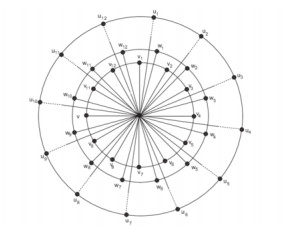
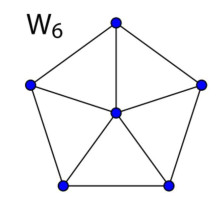
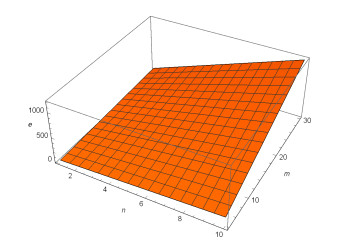
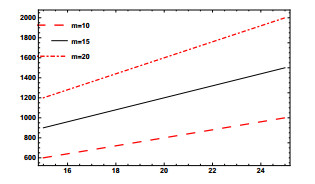
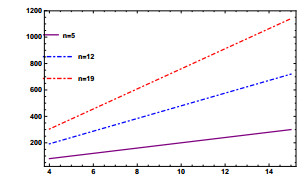
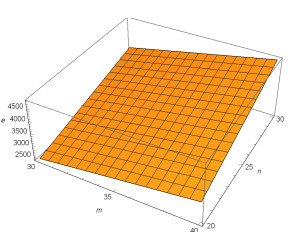
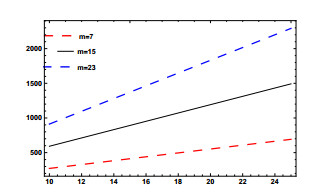
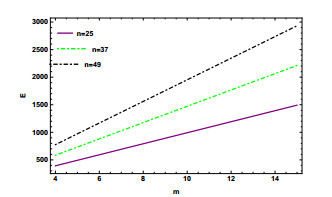


 DownLoad:
DownLoad: